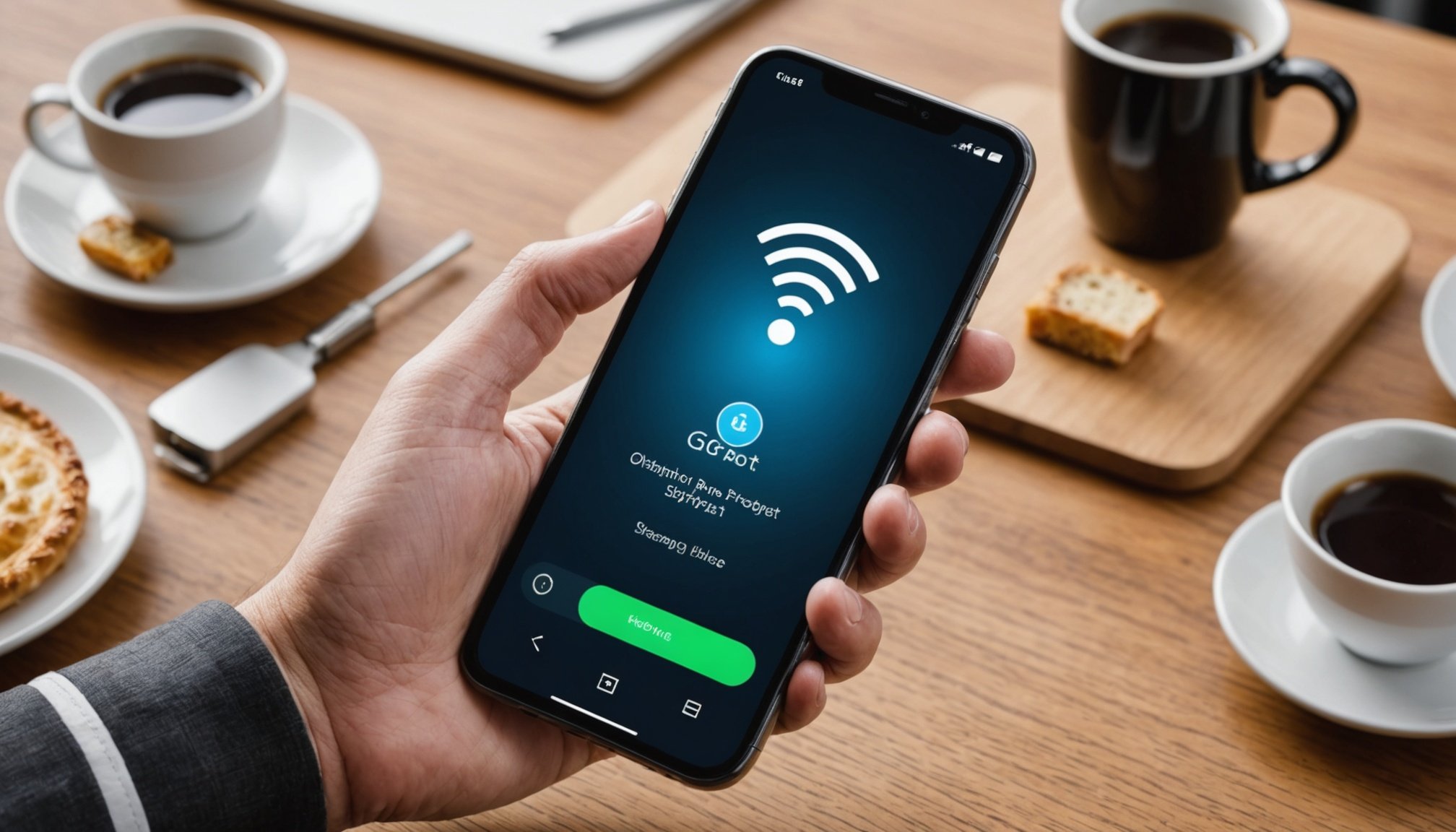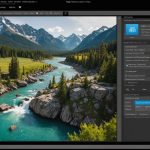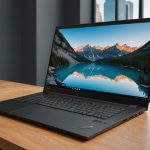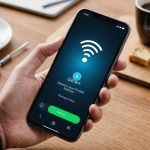Understanding Smartphone Hotspots
Smartphone hotspots have become an essential tool for individuals needing internet access on the go. The key aspect of smartphone hotspots is their ability to convert a mobile phone’s cellular data into a Wi-Fi signal, allowing other devices to connect to the internet via the phone. This cellular sharing utilizes the mobile data network, and its effectiveness can vary depending on the phone’s location, signal strength, and network congestion.
When comparing personal hotspots to traditional Wi-Fi networks, several differences arise. Personal hotspots are convenient for short-term setups and typically support fewer devices than a standard Wi-Fi network. However, they offer the flexibility of mobility, meaning users can stay connected wherever a cellular signal is available.
To ensure efficient use of a mobile internet connection, it’s crucial to consider optimization strategies. Reducing app background activity, updating APN settings, and adjusting other configurations can significantly improve connectivity and speed. Users should be mindful of security, ensuring connections are encrypted and using strong passwords to prevent unauthorized access.
By understanding these basics, users can leverage smartphone hotspots effectively, making informed decisions about their mobile internet use and enhancing their digital experiences.
Optimizing Mobile Hotspot Settings
Enhancing your mobile hotspot settings is crucial for efficiency. It involves understanding the system’s options and modifying configurations to achieve better connectivity and performance.
Adjusting Network Settings
A smart starting point is adjusting the Access Point Name (APN) settings. This helps tailor the connection to suit specific network requirements, thereby improving performance. Furthermore, enabling mobile data limits is beneficial as it controls data usage effectively, preventing unexpected overage charges.
Choosing the Right Frequency Band
The choice between 2.4 GHz and 5 GHz frequency bands greatly affects hotspot performance. While 2.4 GHz offers a wider range, 5 GHz supports faster speeds. Opting for 5 GHz can thus enhance speed, especially in less congested environments. Knowing when to switch can lead to superior connection stability.
Managing Connections
To improve connectivity, it’s wise to limit the number of devices connected simultaneously. This helps in maintaining an optimal speed, preventing one device from consuming excessive bandwidth. Best practices for managing connections involve prioritising essential devices and allocating bandwidth based on usage priority. Such measures are vital, especially for users relying on hotspots for critical tasks.
Enhancing Speed and Performance
Boosting hotspot speed is crucial for seamless internet experiences. It’s essential first to ensure that the smartphone is positioned in an area with strong cellular reception. A clear line of sight and avoiding interference from thick walls or large objects can greatly enhance signal strength. Moreover, regularly updating the smartphone and its hotspot software ensures that all performance improvements are effectively utilized.
Apps specifically designed for internet performance analysis can also be used to further enhance hotspot performance. These applications provide insights into signal strength, channel interference, and other factors affecting your connection, allowing you to make informed adjustments. By analyzing this data, users can determine the most effective strategies for their specific environment.
Another vital factor is regularly switching between frequency bands as per the environment’s demands. While the 5 GHz band often provides faster speeds due to less congestion, the 2.4 GHz band may be more stable in areas with a denser building layout.
Being proactive in finding solutions can go a long way in maintaining a stable and speedy connection, ultimately allowing users to optimize their digital tasks effectively.
Battery Life Optimization
Maximising your smartphone’s battery life is paramount when frequently using it as a hotspot. This ensures uninterrupted connections while you’re on the go.
Reducing Battery Drain
Minimise battery drain by switching off unnecessary applications while your hotspot is active. This lessens background processes that consume power. Many devices come equipped with battery saver features tailored to reduce consumption during intensive tasks like hotspot usage. Engaging these features can further aid battery preservation.
Extending Battery Life
Investing in portable chargers or power banks is a practical step to ensure your device remains functional throughout prolonged use. These tools provide additional power sources when wall outlets are inaccessible, ensuring your smartphone stays charged and your hotspot operational.
Moreover, regularly monitoring your smartphone’s battery metrics while the hotspot is in use can identify excessive consumption patterns. Addressing these through appropriate settings adjustments not only conserves energy but also enhances overall device longevity.
Security Considerations for Mobile Hotspots
Maintaining hotspot security is paramount to ensure data protection and privacy. Setting a strong password for your hotspot is the first line of defence against unauthorized access. A robust password should include a mix of uppercase, lowercase letters, numbers, and symbols.
Utilizing Virtual Private Networks (VPNs) when connected to a hotspot adds another layer of security by encrypting your internet traffic, making it difficult for malicious actors to intercept your data. VPNs are particularly advantageous when using public or unsecured networks, where the risk of data breaches is higher.
When connecting to public hotspots, it’s crucial to be aware of potential risks. Such networks are often targeted by cybercriminals looking to exploit weak security measures. Avoid accessing sensitive information or conducting financial transactions on public hotspots to minimise risk.
Here’s how to protect your connection:
- Set a Strong Password: Use complex combinations.
- Use a VPN: Encrypts data, enhances privacy.
- Avoid Public Hotspots for Sensitive Tasks: Minimises exposure to threats.
These considerations help ensure your mobile internet remains secure. By implementing these strategies, you can confidently and securely use your smartphone’s hotspot functionality.
Troubleshooting Common Hotspot Issues
Dealing with common hotspot issues can be frustrating, especially when you rely on your smartphone for internet connectivity. Here’s a look at some practical troubleshooting techniques.
Resolving Connectivity Problems
When experiencing connectivity issues, start by rebooting your smartphone and any connected devices. This simple step often resolves minor glitches and restores connections. If this doesn’t work, verify that other devices can connect to the network to determine if the problem lies with the hotspot or the device.
Bandwidth throttling, where your internet speed is intentionally slowed by your provider, can affect performance. Keeping track of data usage could alert you to limits imposed by your cellular plan, enabling you to adjust usage or switch to a more suitable plan.
Common Error Messages
Understanding frequent error messages like “Unable to Join Network” or “No Internet Access” can demystify connection problems. These issues could stem from incorrect password inputs or weak cellular signals. Ensure your device settings, such as APN, are correctly configured and update any obsolete software to resolve persistent faults. Reconfiguring hotspot settings may also be necessary for clear connectivity and can usually be performed in the network settings menu.
Comparing Smartphone Hotspot Options
When evaluating smartphone hotspot options, understanding the differences in capabilities can guide better choices. Different smartphone brands offer variable hotspot features, impacting overall user experience.
Hotspot Performance Across Brands
Performance can vary widely among brands. Some smartphones incorporate advanced antennas for improved signal reception, ensuring reliable connectivity. Others may emphasize ease of use, with intuitive interfaces allowing for seamless operation. Evaluating device performance based on your hotspot needs is crucial.
Evaluating Mobile Carriers
Your choice of mobile carrier can significantly affect hotspot experiences. Carriers offer various data plans, some with throttling post data caps, impacting speed. Examining carrier coverage maps reveals network strengths, informing decisions about optimal carrier selection for hotspot use.
User Experiences and Device Reviews
User feedback highlights practical aspects of device and carrier performance, providing real-world insights. Reviews often underscore the importance of battery life during prolonged hotspot use. Users appreciate features such as automatic data-saving modes and customizable settings, ensuring tailored hotspot experiences.
To conclude, careful comparison of options, including device specifications and carrier plans, empowers users to find hotspots aligning with their connectivity needs, enhancing their mobile internet experiences.
Impact on Data Usage
Implementing effective strategies is key to managing data consumption while using smartphone hotspots. Understanding how hotspots impact mobile plans is essential for optimising data use. Hotspot usage can rapidly deplete your mobile data, especially with activities like streaming or downloading large files. This necessitates consideration of your hotspot data limits. Some carriers impose strict limits, slowing speeds after a threshold, affecting internet efficiency.
Tools available can help effectively monitor data consumption. Apps such as My Data Manager or GlassWire provide users with insights into real-time usage, alerting them when approaching limits. These tools are vital for tracking daily data expenditures, allowing for careful management of available resources.
To avoid overage charges, employing data-saving techniques is essential. Reducing video quality, disabling auto-updates, and limiting background data can significantly curb excessive usage. Additionally, choosing data plans that align with heavy users’ needs ensures uninterrupted connectivity. Plans tailored for frequent hotspot use typically offer higher caps or unlimited data with no throttling, providing peace of mind for users relying on hotspot functionality throughout the day.









